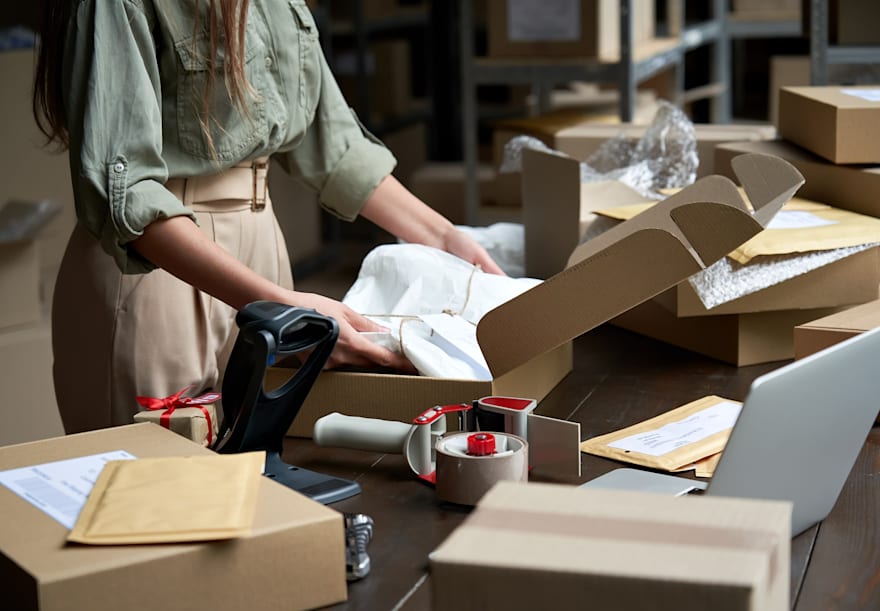
Packaging is a fundamental portion of modern life, influencing consumer behavior, ensuring product safety, and playing a critical role in marketing strategies. From the moment a product is conceived, packaging considerations tend to be the attention of design, logistics, and regulatory deference. This article delves into the boring world of packaging, 代工包裝 its history, functions, materials, environmental impact, and future trends.
The history of packaging dates back to ancient occasions when humans used natural materials like leaves, animal skins, and woven grasses to carry and store food. The advent of pottery and glass brought new possibilities for storage and transportation, making it better to preserve goods for longer periods. The industrial movement in the 19th century marked a significant turning point with the introduction of mass-produced glass baby bottles, tin beers, and later, plastic containers. Each of these innovations responded to the improving needs of society and advances in technology.
Protection: One of the primary purposes of packaging is to protect the product from physical damage, contamination, and spoilage. Effective packaging ensures that goods reach consumers in perfect condition. Availability: Particularly important for food and pharaceutical medication, packaging helps extend the space life of products by safeguarding them from environmental factors such as moisture, light, and oxygen.
Convenience: Packaging enhances the usability of a product, offering features such as resealable zippers, easy-pour spouts, and single-serve portions that cater to modern, on-the-go lifestyles. Communication: Through labels and branding, packaging conveys essential information about the product, including ingredients, usage instructions, and safety safety measures. It also plays a crucial role in marketing by attracting consumers and differentiating products on jampacked shelves. Sustainability: As environmental awareness grows, packaging is increasingly designed to be recyclable, biodegradable, or made from renewable resources. Sustainable packaging aims to minimize the ecological footprint while maintaining functionality.
The selection of materials in packaging is diverse, each with its unique advantages and drawbacks: Glass: Known for its impermeability and inertness, glass is a plus for keeping food and beverages. However, its fragility and weight are significant drawbacks. Plastic: Versatile and lightweight, plastic is used extensively in packaging. Advances in polymer science have led to the development of various types of jackets suited for different applications. However, plastic waste moves severe environmental challenges, prompting a push towards more sustainable alternatives.
Metal: Metals like aluminum and steel are used for beers and foils this can strength and power to protect contents from light and air. Trying to recycle metal packaging is efficient and widely practiced. Paper and Cardboard: These materials are renewable, biodegradable, and easily recyclable, making them popular choices for a range of products from cereal boxes to shipping cartons. Innovations in paper technology continue to enhance their durability and protective qualities. Biodegradable Materials: Emerging materials such as bioplastics and plant-based fibers are gaining the traction as eco-friendly alternatives. These materials are designed to break down without difficulty in the environment, reducing long-term waste.
The environmental impact of packaging is a critical issue, given the global emphasis on sustainability. The lifecycle of packaging materials, from production to garbage disposal, affects mid-air in several ways. Key concerns include: Resource Exhaustion: The extraction and processing of garbage for packaging, such as petroleum for plastic or bushes for paper, consume natural resources and energy. Waste Management: Improper garbage disposal of packaging waste leads to toxins and kitty. Plastic waste, in particular, can take hundreds of years to rot, posing a threat to animal and ecosystems.
Carbon Footprint: The production, transportation, and garbage disposal of packaging contribute to greenhouse gas emissions. Efforts to reduce the carbon footprint include optimizing packaging design to use fewer materials and increase efficiency. Trying to recycle and Reuse: Effective trying to recycle systems can mitigate some of the environmental impacts of packaging. However, the success of trying to recycle programs depends on consumer contribution and the infrastructure available to process different types of materials. The future of packaging is molded by technological advancements, consumer preferences, and regulatory changes. Key trends include:
Smart Packaging: Incorporating technologies such as QR codes, NFC tags, and receptors, smart packaging offers enhanced functionality. It can provide real-time information about product freshness, track supply sequence logistics, and engage consumers with interactive content. Sustainable Innovations: The push for sustainability is driving the development of new materials and packaging designs. Innovations like edible packaging, compostable materials, and zero-waste packaging systems are gaining the traction. Personalization: Advances in digital printing and customization allow brands to create personalized packaging that resonates with individual consumers. This trend is particularly prominent in the luxury and e-commerce sectors.
Regulatory Deference: Governments around the world are implementing stricter regulations to reduce packaging waste and promote trying to recycle. Companies must adapt to these regulations while maintaining the appeal and functionality of their packaging. Minimalism: There is a growing trend towards minimalist packaging, which uses fewer materials and simpler designs. This approach not only reduces environmental impact but also aligns with consumer preferences for straightforward, no-frills products.
Packaging is a dynamic field that takes into account science, engineering, design, and marketing. Its progression mirrors the changing needs and values of society, from ensuring product safety to addressing environmental concerns. As technology advances and sustainability becomes a central focus, the future of packaging promises to be innovative, efficient, and increasingly eco-friendly. Understanding the complexity and trends in packaging helps businesses, consumers, and policymakers make informed decisions that benefit the economy and the planet.